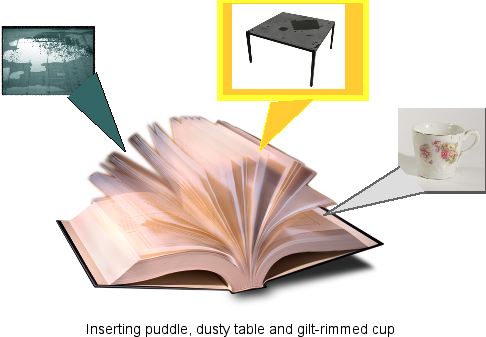2. Setting
| |
iv) DESCRIPTION INTERLEAVED |
If setting moves into the foreground—as often in fantasy, where exotic buildings or natural marvels amaze the reader along with the characters—then it’s natural to give a whole long block of description. The description is interesting in its own right. But when setting is background, I like to spread it through the action and dialogue—a sentence here, a couple of sentences there, rarely more than a short paragraph at a time.
This keeps the story flowing along and also makes for more evocative description, I think. Brief images and momentary impressions are more vivid than long connected passages. Dust on a table … the delicacy of a gilt-rimmed porcelain cup … a reflection in a puddle—such quick brushstrokes flash unexpected pictures into the reader’s mind.
So then you have to find ways of working these snippets of description into the action.
 Dust on the table—when someone leans their elbows on it. Dust on the table—when someone leans their elbows on it.
The gilt-rimmed cup—when someone puts it down with a chink!
The reflection in a puddle—when someone warns, ‘Watch where you step.’
Smooth interleaving of setting and action—that’s the goal.
Generally, you’d aim to introduce the larger impressions of setting first, the tiny close-up details later.
|
